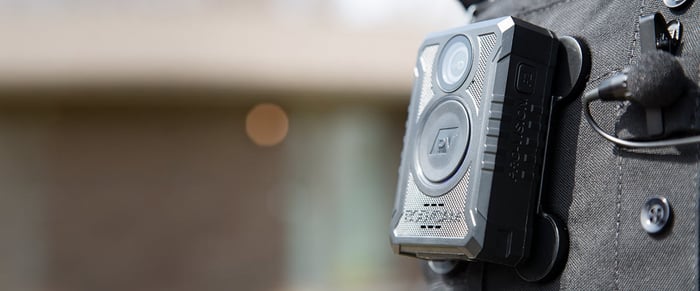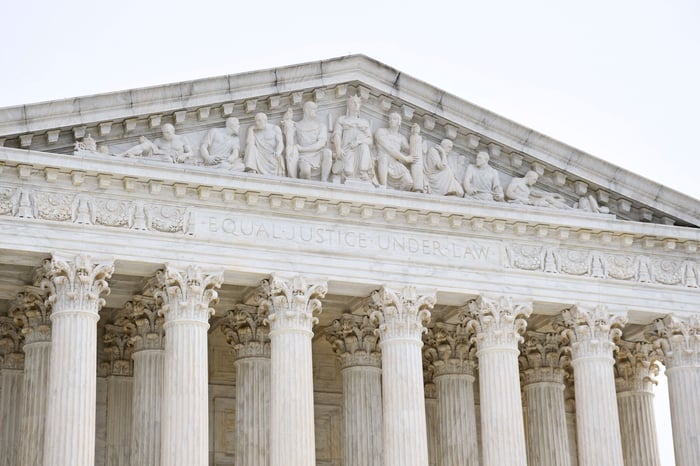Table of Contents
Introduction
Law enforcement agencies today face unprecedented volumes of digital evidence – from body-worn camera (BWC) videos and CCTV footage to audio recordings and photos – that must be redacted before public release. Redaction is essential to protect privacy and comply with laws while maintaining public transparency. Yet several myths persist about how easy or automatic digital evidence redaction can be. This whitepaper debunks these myths and clarifies the realities of effective video and audio redaction. In doing so, we highlight why a specialized, “white-glove” service provider like Focal Forensics offers a superior approach for law enforcement redaction needs. The goal is to help police departments and agencies rethink their redaction process with an informed, professional, and secure strategy.
Myth #1: “AI Can Do 100% Accurate Redaction Automatically”
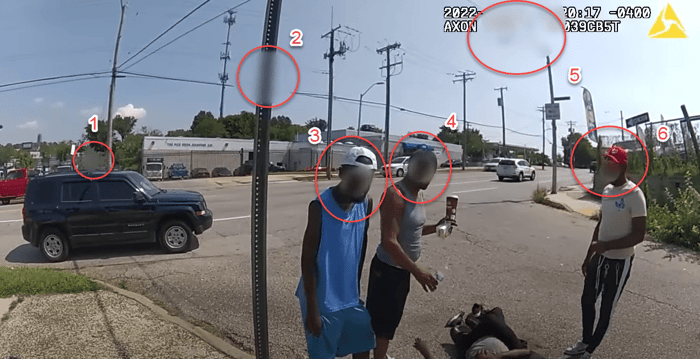
Myth: With advances in artificial intelligence, some believe that automated software can identify and blur every face, license plate, or piece of sensitive data in video evidence with perfect accuracy – essentially a push-button solution requiring no human oversight. Vendors often market AI-driven redaction tools as nearly infallible, promising quick results without errors.
Reality: No current AI or software can guarantee 100% accuracy in video redaction. In fact, a recent policing study found “no fully automated video redaction tool capable of serving the police force’s needs is currently available” – all solutions still “require human intervention to assess the quality of each redaction.”Complex, real-world video footage presents challenges that trip up even the smartest algorithms. Fast motion, poor lighting, unusual angles, or partial obstructions can cause an AI to miss a face or an ID badge, or conversely to falsely blur out something that shouldn’t be. As Focal Forensics notes, “no software can be trusted to produce redaction that is 100% accurate” because algorithms may fail to recognize nuances in policing incidents. A single mistake on one frame – e.g. one unblurred face or a visible document – can expose someone’s identity or private information. Given the zero-margin-for-error stakes, the human eye is needed to meticulously review footage frame-by-frame for any details the AI might miss.
Rather than relying blindly on an “AI-only” approach, the gold standard is AI assistance with expert oversight. Automated tools can certainly speed up the process by detecting many faces or objects, but skilled analysts must verify every redaction. Leading providers like Focal Forensics build rigorous Quality Assurance (QA) into their workflow – a trained professional double-checks each blurred frame and audio bleep to “guarantee 100% accurate redaction” before release. In practice, Focal Forensics follows strict departmental guidelines and then performs a second QA review on all work, adding “additional confidence that all necessary redactions have been made and any initial mistakes have been corrected.” This human-in-the-loop process ensures that automated errors are caught and corrected, achieving the total accuracy that purely automated software still cannot reliably provide. Agencies that have worked with Focal Forensics report that the expertise and attention to detail “surpassed expectations…providing a valuable and reliable solution for protecting sensitive information and ensuring privacy compliance.”
Myth #2: “Redaction Is Quick and Easy – Just Push a Button”
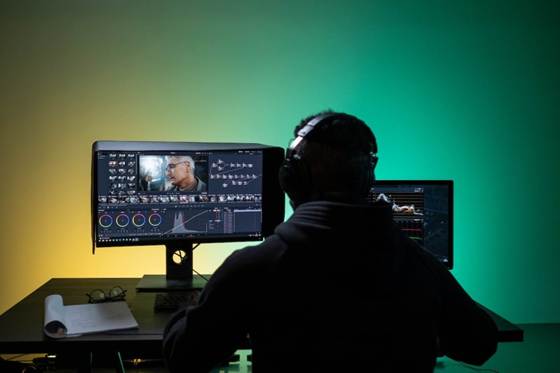
Myth: Many assume that once you have software, redacting a video is a simple task that any staff member can do in minutes. This myth envisions redaction as a one-click function – for example, automatically blurring all faces with minimal effort. Some vendors market their tools as if you can “upload a video and let the software do the rest,” leading departments to hope that redaction won’t be a burden on time or personnel.
Reality: Video redaction is a time-consuming, labor-intensive process – whether done manually or with software assistance. The U.S. Justice Department notes that “video redaction often requires frame-by-frame review,” since a single five-minute video can contain 9,000 individual frames that might each need careful examination. In practice, trained police technicians report spending hours per minute of footage: one study found it takes about 48 minutes of work to redact one minute of video, meaning 8 hours of labor for a 10-minute clip. This is because officers must pause and obscure moving faces, license plates, documents, and more – a meticulous editing task that definitely isn’t achieved by one button.
Even “automatic” redaction software doesn’t eliminate the workload. As Focal Forensics cautions, “No automatic redaction software is perfect…some [tools] profess a one-button solution, [but] they fail to generate accurate redactions even for typical policing incidents.” Invariably, department staff have to “double check the software output” and manually fix the many inaccurate or unnecessary blurs the algorithm might produce. The learning curve and QA demands mean that adopting software often just shifts the burden onto already busy personnel. Internal staff must be trained extensively to use the software (which is “not always user-friendly and can take many hours to acquire proficiency”, and someone must still review every frame for errors. So rather than a fast shortcut, a poorly performing “automated” solution can actually slow things down, generating false positives to remove and requiring a meticulous QA process. It’s no surprise that agencies can quickly become overwhelmed, with backlogs of unredacted videos and pressure from the public or courts to release footage.
The truth is that effective redaction takes skill, time, and dedicated focus. Recognizing this reality, many law enforcement agencies now seek outside help to handle surges in video requests. The DOJ’s Chief FOIA Officers Council suggests that bringing in contractors on an ad hoc basis for video redaction can be smart, as it “allows an agency to sidestep issues of procuring software and training or hiring personnel” just to meet a sudden demand. In other words, outsourcing to specialists can save your team from scrambling when deadlines loom. This is where Focal Forensics provides a crucial service: rather than your officers spending nights and weekends blurring footage, a professional redaction team can do it far more efficiently. Focal Forensics prides itself on being an extension of your department – you “eliminate the headache of doing the work in-house” and free up your officers to “focus on the important tasks at hand while your media is being processed by a team of experts.” Their specialists have thousands of hours of experience and established workflows, enabling them to redact large volumes of video quickly without sacrificing accuracy. For example, Focal’s team is used to meeting tight FOIA and court deadlines; they “prioritize a department’s urgency” and have a “robust redaction team” to ensure all mandated release dates are met on time. By leveraging such a service, even small departments can fulfill records requests promptly and look “transparent” to the public, without burning out their own staff on tedious editing work. In short, redaction is not a push-button task, but with the right partner, it can feel almost that easy for your agency.
Myth #3: “Any Video Company Can Provide Redaction Services”
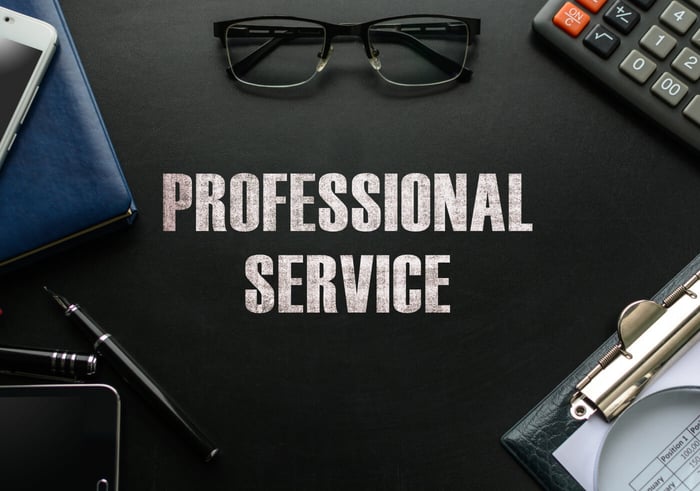
Myth: Some agencies assume that redaction is a generic skill – that any IT team, audiovisual vendor, or tech-savvy individual can handle it. After all, blurring a video or muting audio seems similar to common video editing tasks. This myth leads departments to consider using non-specialist contractors (or even internal video units without evidence training) to perform redactions, under the impression that handling digital evidence is no different than editing a commercial video.
Reality: Redacting law enforcement evidence requires specialized expertise, protocols, and tools. It’s not just about technical editing; it’s about handling sensitive criminal justice information in a secure and legally compliant way. A vendor with no background in police evidence could inadvertently violate chain-of-custody, miss legally required redactions, or expose your agency to security risks. As the International Association of Chiefs of Police (IACP) and other bodies have emphasized, departments must ensure that any third-party handling evidence adheres to Criminal Justice Information Services (CJIS) security policies and relevant privacy laws. For example, all personnel need proper background checks and training on protecting sensitive data, file transfers must be encrypted, and storage must be secure – requirements a typical media company might not even be aware of. Compliance is paramount. Every police department asks a potential redaction provider: Are they compliant with CJIS standards and state confidentiality laws? If the answer is no or uncertain, that provider shouldn’t be touching your evidence.
Additionally, legal knowledge is crucial in determining what to redact. Privacy and disclosure laws vary widely by jurisdiction – one state may mandate blurring all faces in a bodycam video, while another only requires redacting minors or victims. There is “high variation,” and the “redaction guidance” must be carefully tailored to each agency’s policies and state statutes. A generic video editor might not know these nuances. By contrast, Focal Forensics’ team consists of media forensic professionals trained specifically in processing video evidence. They work only with criminal justice footage and thus stay “informed about current and upcoming legislation” in each state to ensure every redaction meets the latest legal requirements. In fact, Focal Forensics follows recognized best practices such as SWGDE (Scientific Working Group on Digital Evidence) guidelines to maintain evidentiary integrity. Their process is CJIS-compliant end-to-end – from encrypted file transfers and secure offline storage to strict access controls – giving agencies peace of mind that sensitive content won’t be exposed or mishandled. This level of security and familiarity with law enforcement standards is what sets specialized forensic vendors apart from general video services.
Equally important is the “white-glove” service element. Redacting evidence often isn’t a one-size-fits-all job; it requires close collaboration with the department to get it right. A true professional service will work with your records officers or prosecutors to understand the scope of what needs to be redacted in each case (for instance, court-ordered redactions or specific local exemptions). Focal Forensics emphasizes developing “clear guidelines up front” with each department’s input, so that their technicians know exactly which details to remove or preserve. They essentially become an extension of your team, aligning to your standard operating procedures. This contrasts with a random video shop that might simply apply generic blurs without understanding the context or consequences. The difference shows in the results: agencies that partner with a specialized provider report more accurate and consistent redactions and smoother release processes. As one records officer observed after outsourcing a complex project, “assigning the heavy, tedious redactions” to experts “took a lot of weight off my shoulders” – what would have taken her team over a year, Focal Forensics completed “in just under two weeks.” The efficiency, accuracy, and confidentiality gained from using a forensic redaction service cannot be overstated.
Finally, not every company has the capacity to handle all types of digital evidence. Leading providers like Focal Forensics specialize in all media formats, not just police video, but also audio recordings (with voice alteration or muting), still images, dashcam or drone footage, 911 calls, and even documents that need to be OCR-scanned and redacted. This matters because a public records request may involve multiple evidence types (e.g., a surveillance video and an audio interview). Using one trusted service for all redaction ensures consistency and ease. Focal Forensics has processed thousands of videos, images, and audio files over the past decade, developing specialized techniques for each. This depth of experience is unmatched by generic vendors, and it’s one reason Focal Forensics is regarded as an “industry leader in forensic video services.” When you choose a provider that understands both the technology and the legal/forensic context, you get a truly comprehensive, reliable solution rather than a gamble.
Conclusion: Embrace Expertise for Effective Redaction
In summary, it’s time to rethink any notions that digital evidence redaction is an “easy” box to check. Myth-busting reveals a clear message: achieving timely, accurate, and lawful redaction of videos or audio is a specialized task requiring the right blend of technology and human expertise. Automated tools (even advanced AI) are valuable aids but not foolproof; human oversight remains essential to catch errors and ensure 100% accuracy. Redaction work can strain agency resources if attempted in-house with insufficient tools or training, as it demands meticulous attention and significant time on task. And importantly, not every vendor is equipped to handle sensitive police evidence; security compliance, legal knowledge, and forensic experience are non-negotiable for any credible redaction service.
For law enforcement professionals, the reality is that partnering with a trusted specialist is often the smartest, most cost-effective way to meet public records obligations. Focal Forensics exemplifies such a partner: a full-service redaction provider with a white-glove approach, offering cost-effective pay-as-you-go pricing (no software licenses or subscriptions required) and a team of vetted experts dedicated to your needs. They have a proven track record as a “CJIS compliant provider of comprehensive redaction services” for agencies across all levels of government. By using Focal Forensics, departments big and small have “freed up valuable time and resources”, eliminated backlogs, and met tight release deadlines confidently. The service scales to your demand; you “only pay for what you need” with no long-term commitment, but you gain a reliable extension of your department’s capabilities whenever required. Perhaps most importantly, you gain peace of mind that every frame and every waveform in your evidence has been handled with the utmost care, professionalism, and precision.
Law enforcement agencies can no longer afford to treat video redaction as an afterthought or assume myths are true. The stakes for public trust and privacy are simply too high. Instead, by embracing a professional, forensic approach to digital evidence redaction, agencies can ensure transparency and compliance go hand-in-hand. In the end, the real “game-changer” isn’t just deploying body-worn cameras, it’s having a great redaction program and team to manage the footage that comes from them. By dispelling myths and leaning on expert services, departments will be well-equipped to handle the ever-growing flow of digital evidence, efficiently release what is necessary, and protect what is private. It’s time to rethink redaction not as a burden, but as a critical process best handled by those who specialize in it. With the right partner, your agency can meet the demands of modern transparency without sacrificing accuracy, security, or sanity, and that’s no myth, but a reality proven by experience.
Sources:
- Focal Forensics – Redaction Services Overview
- Triad (UK Police Case Study) – Debunking Myths of Automated Video Redaction
- Police1 – 10 Years of Video Redaction: Lessons Learned (Focal Forensics)
- DOJ Chief FOIA Officers Council – Best Practices for Video Redaction
- Focal Forensics – Bodycam Redaction Best Practices Guide
- AWS Case Study – Focal Forensics and Secure Collaboration
- Focal Forensics – Company Info (Police1 Directory)
FAQs
Why is digital evidence redaction necessary in law enforcement?
Answer: Redaction ensures that sensitive information—such as faces, license plates, victim identities, or private conversations—is protected before digital evidence is released. It balances transparency with privacy, complying with state laws, court orders, and public records requirements while maintaining public trust.
Is it true that AI can perform 100% accurate video redaction?
Answer: No. AI tools can assist by detecting faces and objects, but no algorithm is flawless. Poor lighting, fast movement, or obstructions can cause errors. Without human oversight, critical details may be missed, risking exposure of private information.
Why isn’t redaction just a “push-button” process?
Answer: Redaction often requires frame-by-frame review of thousands of frames in even a short video. A 10-minute bodycam video can take hours to redact properly. Automated tools speed up the work but still require skilled technicians to review and correct errors.
Can any video editing company provide redaction services?
Answer: Not reliably. Redacting law enforcement evidence requires specialized knowledge of CJIS security standards, chain of custody, and local/state privacy laws. A standard video editing vendor may lack the compliance and forensic expertise required to protect sensitive evidence.
What makes Focal Forensics different from other redaction providers?
Answer: Focal Forensics offers a white-glove service model, combining forensic expertise, CJIS-compliant security, and cost-effective pricing. Their team specializes in video evidence, works directly with departments to define redaction scope, and ensures accuracy through multi-stage quality assurance.
What types of digital evidence require redaction?
Answer: All forms of digital evidence may need redaction, including body-worn camera (BWC) footage, CCTV video, interview audio, images, drone footage, 911 calls, and documents. Each format presents unique challenges that require tailored expertise.
How do privacy laws affect redaction requirements?
Answer: Laws vary widely across jurisdictions. For example, one state may require all faces blurred, while another only mandates protecting minors and victims. Providers like Focal Forensics stay current with state and local legislation to ensure every project is legally compliant.
What risks do agencies face with poor or incomplete redaction?
Answer: Inadequate redaction can result in privacy breaches, lawsuits, and loss of public trust. A single missed frame exposing a victim or confidential document can compromise a case and damage the department’s reputation.
Why should agencies consider outsourcing redaction instead of handling it internally?
Answer: Outsourcing reduces staff workload, prevents backlogs, and ensures professional accuracy. It allows departments to avoid the costs of purchasing software, training staff, and dedicating officers to time-intensive editing. Experts like Focal Forensics handle the work efficiently while agencies focus on policing.
How does Focal Forensics ensure secure and compliant handling of evidence?
Answer: Focal Forensics follows CJIS-compliant workflows, uses encrypted file transfer, secure storage, and access controls. Their forensic background ensures chain-of-custody integrity, while their QA process guarantees accurate, legally sound redactions.

